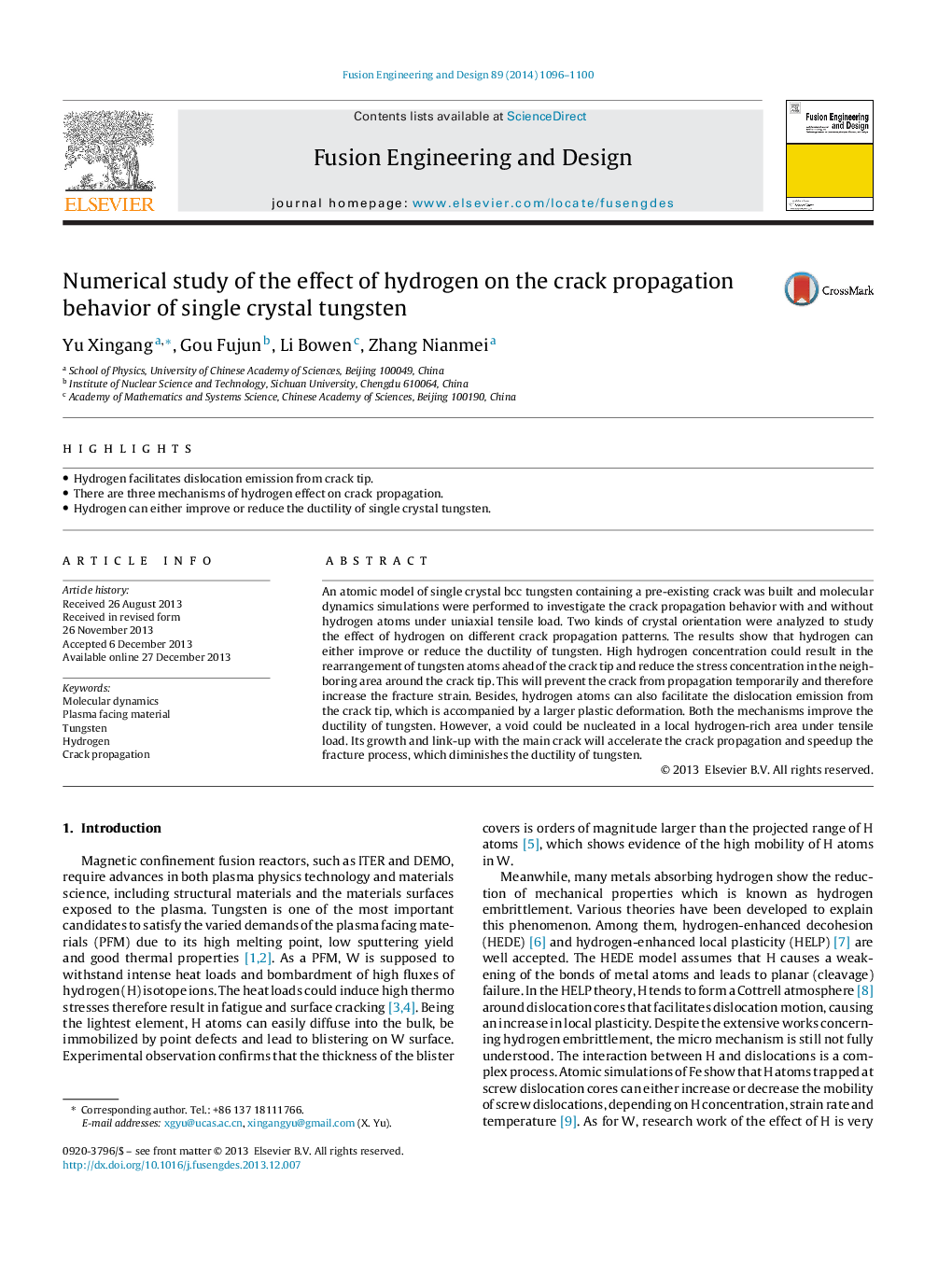| Article ID | Journal | Published Year | Pages | File Type |
|---|---|---|---|---|
| 271186 | Fusion Engineering and Design | 2014 | 5 Pages |
•Hydrogen facilitates dislocation emission from crack tip.•There are three mechanisms of hydrogen effect on crack propagation.•Hydrogen can either improve or reduce the ductility of single crystal tungsten.
An atomic model of single crystal bcc tungsten containing a pre-existing crack was built and molecular dynamics simulations were performed to investigate the crack propagation behavior with and without hydrogen atoms under uniaxial tensile load. Two kinds of crystal orientation were analyzed to study the effect of hydrogen on different crack propagation patterns. The results show that hydrogen can either improve or reduce the ductility of tungsten. High hydrogen concentration could result in the rearrangement of tungsten atoms ahead of the crack tip and reduce the stress concentration in the neighboring area around the crack tip. This will prevent the crack from propagation temporarily and therefore increase the fracture strain. Besides, hydrogen atoms can also facilitate the dislocation emission from the crack tip, which is accompanied by a larger plastic deformation. Both the mechanisms improve the ductility of tungsten. However, a void could be nucleated in a local hydrogen-rich area under tensile load. Its growth and link-up with the main crack will accelerate the crack propagation and speedup the fracture process, which diminishes the ductility of tungsten.
